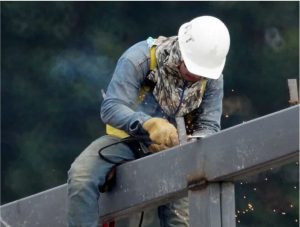 Welding is a vital process in various industries such as construction, manufacturing, automotive, and shipbuilding. Despite its importance, welding is also one of the most hazardous occupations, exposing workers to a wide range of occupational hazards. These hazards, if not managed effectively, can lead to serious injuries, long-term health issues, and even fatalities. Understanding and promoting awareness of these occupational hazards and the implementation of proper safety measures is crucial in protecting welders and ensuring a safe work environment.
Welding is a vital process in various industries such as construction, manufacturing, automotive, and shipbuilding. Despite its importance, welding is also one of the most hazardous occupations, exposing workers to a wide range of occupational hazards. These hazards, if not managed effectively, can lead to serious injuries, long-term health issues, and even fatalities. Understanding and promoting awareness of these occupational hazards and the implementation of proper safety measures is crucial in protecting welders and ensuring a safe work environment.
This article explores the common occupational hazards faced by welders, the level of awareness among workers about these dangers, and the safety measures that should be employed to mitigate risks. By fostering awareness and adhering to safety protocols, industries can significantly reduce the risks associated with welding activities.
Overview of Occupational Hazards in Welding
1.1 Physical Hazards
Burns and Eye Injuries Welding generates extreme heat and ultraviolet (UV) radiation, both of which can cause severe burns and eye injuries, commonly known as “welder’s flash” or “arc eye.” Inadequate eye protection can result in painful corneal burns, while exposure to sparks or molten metal can lead to skin burns.
Electrocution Welders work with high-voltage electrical equipment, making them susceptible to electric shock. Improper grounding, faulty wiring, or contact with live electrical parts can result in electrocution, which may lead to severe injury or death.
Noise Hazards The welding process often produces loud noises that can damage hearing over time. Welders who are not adequately protected from prolonged exposure to high noise levels may suffer from noise-induced hearing loss (NIHL), a permanent condition.
Fire and Explosion Risks Welding involves the use of flammable gases and materials, which can lead to fires or explosions if not handled with care. Sparks and molten metal generated during welding can easily ignite nearby combustible materials, creating a dangerous environment.
1.2 Chemical Hazards
Exposure to Fumes and Gases Welders are exposed to a variety of hazardous fumes and gases, including manganese, chromium, and carbon monoxide, which are released during the welding process. Prolonged exposure to these substances can lead to serious respiratory issues, lung damage, and other long-term health effects such as metal fume fever.
Inhalation of Particulate Matter Welding generates small particles of metal and other materials, which, when inhaled, can accumulate in the lungs and cause respiratory diseases such as chronic obstructive pulmonary disease (COPD), asthma, and even lung cancer.
1.3 Ergonomic Hazards
Musculoskeletal Disorders Welding often requires workers to maintain awkward postures for extended periods, leading to musculoskeletal disorders (MSDs). These disorders, which affect the muscles, tendons, and nerves, can result in chronic pain and reduced mobility over time.
Fatigue Welders frequently work long hours in physically demanding environments. Fatigue, combined with the physically strenuous nature of welding tasks, increases the risk of accidents and injuries, as workers may become less alert or make errors in judgment.
Chapter 2: Awareness of Occupational Hazards Among Welders
2.1 Importance of Hazard Awareness
The first line of defense against workplace hazards is awareness. Welders who understand the risks associated with their work are more likely to take the necessary precautions to protect themselves. However, studies have shown that a significant percentage of welders, particularly in small or informal industries, have a limited understanding of the hazards they face.
Awareness not only affects how welders approach their tasks but also influences their willingness to adopt and consistently use personal protective equipment (PPE) and follow safety protocols. In many cases, a lack of knowledge or misinterpretation of hazards can lead to complacency, resulting in unsafe practices that increase the likelihood of accidents.
2.2 Factors Affecting Awareness
 Education and Training The level of formal education and specific safety training welders receive directly impacts their awareness of occupational hazards. Those with limited or no safety training are often less aware of the dangers of welding and the proper use of safety measures. Experience Experienced welders may have greater awareness of the hazards they encounter due to their exposure to various workplace environments. However, experience can sometimes lead to overconfidence or a sense of invulnerability, resulting in reduced vigilance over time.
Education and Training The level of formal education and specific safety training welders receive directly impacts their awareness of occupational hazards. Those with limited or no safety training are often less aware of the dangers of welding and the proper use of safety measures. Experience Experienced welders may have greater awareness of the hazards they encounter due to their exposure to various workplace environments. However, experience can sometimes lead to overconfidence or a sense of invulnerability, resulting in reduced vigilance over time.
Workplace Culture A workplace that emphasizes safety fosters higher awareness among employees. Conversely, in environments where safety protocols are not strictly enforced or prioritized, workers are less likely to be conscious of hazards or the importance of protective measures.
Chapter 3: Safety Measures for Welders
3.1 Personal Protective Equipment (PPE)
Welding Helmets A welding helmet with an appropriate filter shade is essential for protecting the welder’s eyes and face from intense UV radiation and sparks. The helmet should provide full coverage, including side protection, to prevent peripheral exposure to harmful rays.
Protective Clothing Welders must wear flame-resistant clothing made of durable materials like leather or specialized fabrics designed to resist sparks and heat. This includes gloves, aprons, and welding jackets that protect the skin from burns.
Respiratory Protection Since welders are exposed to hazardous fumes and gases, wearing appropriate respiratory protection is critical. Depending on the type of welding process, welders may need to use respirators, either as disposable masks or powered air-purifying respirators (PAPRs) to filter out dangerous particles.
Ear Protection To safeguard against hearing loss, welders should use earplugs or earmuffs designed to reduce noise exposure in environments where welding operations produce high decibel levels.
3.2 Engineering Controls
Ventilation Systems Adequate ventilation is necessary to remove harmful welding fumes and gases from the work area. Local exhaust ventilation (LEV) systems can be installed to capture fumes at the source, preventing the accumulation of hazardous substances in the breathing zone.
Fire Prevention Fire safety measures, including the removal of flammable materials from the welding area and the installation of fire extinguishers and fire blankets, are essential for preventing fires and explosions during welding operations.
3.3 Safe Work Practices
Regular Equipment Maintenance Ensuring that welding equipment is properly maintained and functioning correctly is crucial in preventing electrical accidents, fires, and malfunctions. Regular inspections and repairs reduce the risk of equipment failure and related hazards.
Safe Welding Techniques Welders should follow safe work practices, such as grounding electrical equipment, working in well-ventilated areas, and maintaining a safe distance from flammable materials. Proper technique and adherence to safety guidelines are essential to minimize risks.
Ergonomics and Workload Management To prevent musculoskeletal disorders and fatigue, welders should adopt ergonomic postures when working, use adjustable workstations where possible, and take regular breaks to rest and recuperate.
Welding is an inherently dangerous profession, but with proper awareness of occupational hazards and the consistent use of safety measures, the risks can be significantly minimized. Employers have a responsibility to provide welders with the necessary training, protective equipment, and safe working conditions. Meanwhile, welders must take an active role in their own safety by following established protocols, staying informed about the hazards of their trade, and using the appropriate safety gear.
Increased awareness of hazards, coupled with the adoption of comprehensive safety measures, will not only protect the health and well-being of welders but also improve productivity and reduce the economic burden of workplace accidents.























































